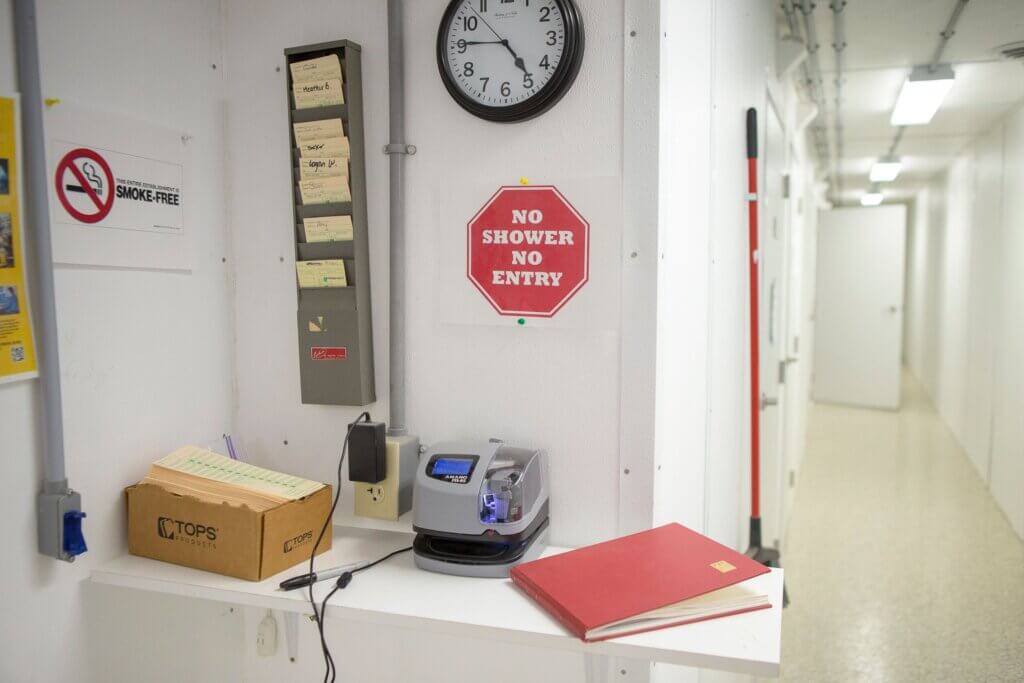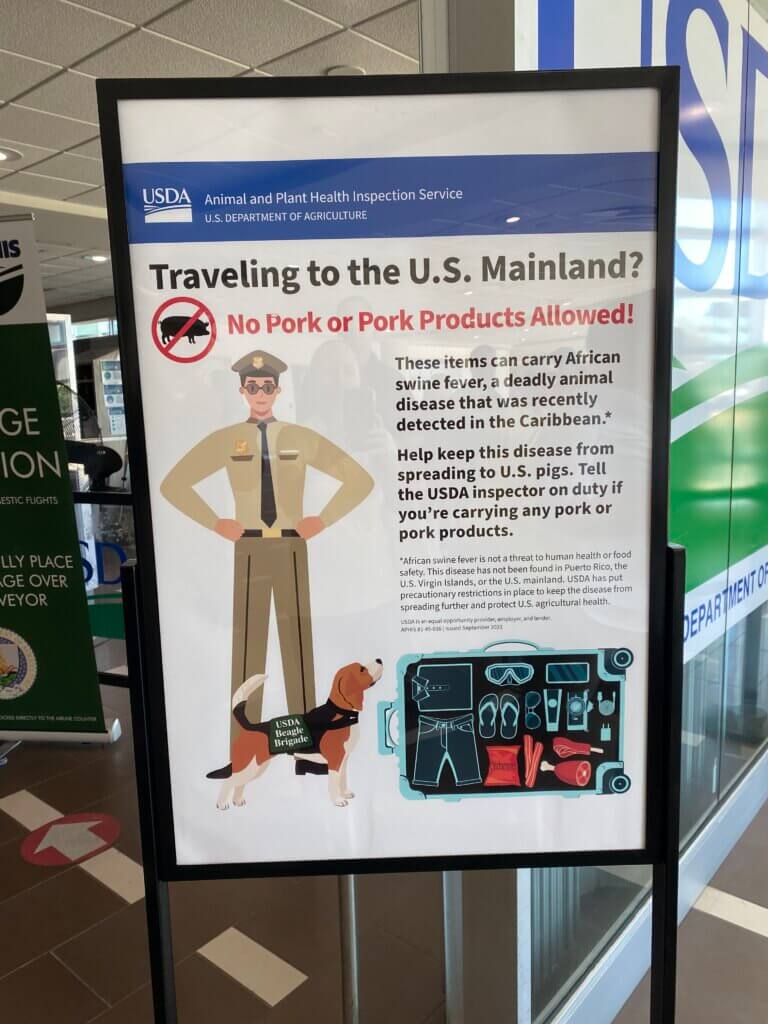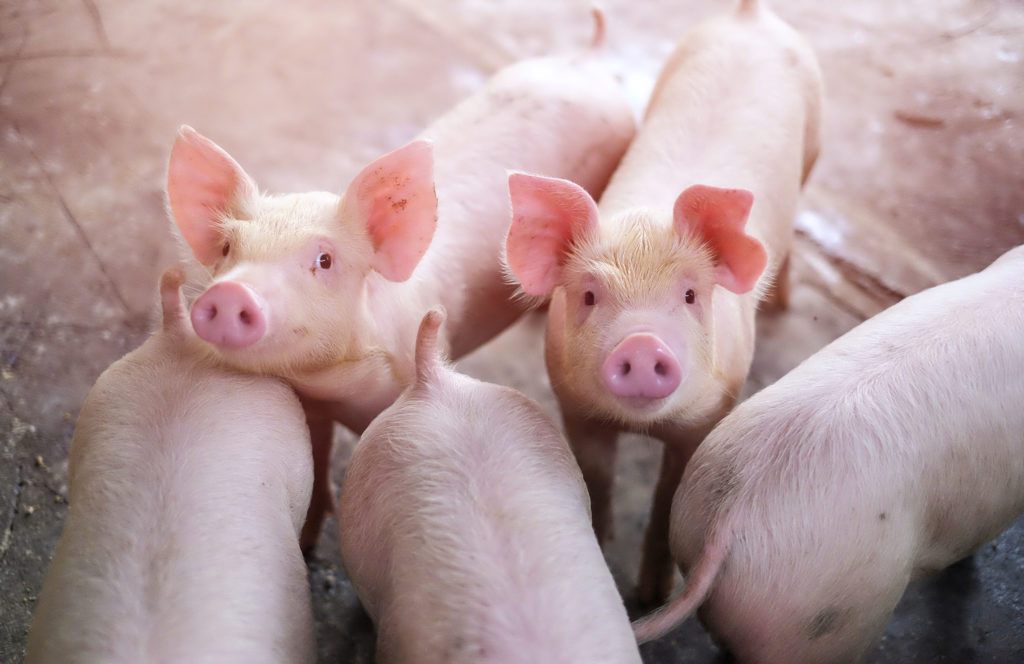
SHIC, launched by the National Pork Board in 2015 solely with Pork Checkoff funding, continues to focus efforts on prevention, preparedness, and response to novel and emerging swine disease for the benefit of US swine health. As a conduit of information and research, SHIC encourages sharing of its publications and research. Forward, reprint, and quote SHIC material freely. SHIC is funded by America’s pork producers to fulfill its mission to protect and enhance the health of the US swine herd. For more information, visit http://www.swinehealth.org or contact Dr. Sundberg at [email protected].

The temperature and time required to inactivate PRRSV and PEDV on contaminated surfaces commonly found in supply entry rooms on swine farms was evaluated in a study conducted by Dr. Gustavo Silva of Iowa State University and funded by SHIC. To reduce the risk of virus introduction through contaminated supplies, recommendations include materials being held at 86°F for at least 24 hours. Another option would be to increase the temperature to at least 104°F, which allows the holding time to be reduced to 12 hours.
Using foggers in supply entry rooms for decontamination of fomites entering sow farms to mitigate risk is a common practice. However, recent research questions the efficacy of this method for pathogen inactivation, especially in complex situations where pathogens may be shielded by organic material or blind spots (Kettelkamp et al., 2019; Leuck et al., 2020).
In this study on time and temperature required for virus inactivation, PRRSV MN184, PRRSV 144 L1C variant, or PEDV were used. Surfaces included diamond plate aluminum and cardboard tested at four temperatures (68°F, 86°F, 104°F and 122°F) with six holding times (15 minutes, 60 minutes, six hours, 12 hours, 24 hours, and 36 hours). Once the surface temperature reached the desired condition, the coupons were held for the designated holding time. Negative controls remained at room temperature for 36 hours and positive controls remained at room temperature for 15 minutes. Three replicates of each treatment were performed and each coupon was inoculated with 2mL of virus or 2mL of media (negative control). Virus titration was performed for each sample after the holding time. Regression models and Weibull curves were built to assess the impact of temperature and time on virus inactivation.
Under the conditions of this study, PRRSV 144 L1C variant was inactivated on aluminum surfaces by heating coupons to 86°F for 12 hours and on cardboard surfaces by heating the coupons to 86°F for six hours. Regarding PRRSV MN184, virus inactivation was possible at 86°F after 24 hours on aluminum and at 104°F after 12 hours on cardboard. PEDV inactivation was achieved at 86°F after six hours on aluminum and at 86°F after 12 hours on cardboard. Virus was inactivated after 15 minutes and one hour at 122°F in aluminum surfaces for PEDV and PRRSV 144 L1C variant, but not for cardboard.
Consequently, this study provides data-driven recommendations for holding times at specific temperatures to reduce the risk of virus introduction at swine farms through contaminated supplies.

SHIC Associate Director Megan Niederwerder joined a group of 15 US-based veterinarians on a learning trip to San Juan, Puerto Rico, in late August. The tour, organized and led by NPPC, provided Dr. Niederwerder with first-hand observations of the current ASFV prevention and surveillance programs on the island just 80 miles from the Dominican Republic where ASF is an ongoing risk and challenge. Niederwerder said that traveling to Puerto Rico to see the day-to-day work of USDA and CBP provided the veterinarian team with valuable first-hand experience on the ASFV prevention efforts in the Caribbean.
Dr. Niederwerder and colleagues learned about diagnostic surveillance of wild and domestic pigs in Puerto Rico from USDA Veterinary Services and had the opportunity to tour the veterinary diagnostic laboratory. Their agenda also included observation of wild pig trapping and transport efforts on the island with USDA Wildlife Services. In addition, representatives from the USDA Plant Protection and Quarantine (PPQ) Program met with the US veterinary delegation who also heard from Puerto Rico’s Secretary of Agriculture.
Due to regular travel of ferries between Puerto Rico and the Dominican Republic, the veterinarians visited a ferry terminal where they learned about the efforts of US Customs and Border Protection to prevent entry of ASFV through contaminated pork products. From there, they toured PPQ pre-clearance at the airport where passenger luggage destined for US mainland undergoes inspection for pork by USDA. Both CBP and USDA had highly trained beagle teams in place to assist with inspecting cargo and passengers for prohibited pork products.

Wean-to-harvest biosecurity has been developing as a complex problem for many years. This SHIC program will look for cost-effective, innovative solutions to a significant biosecurity gap in US swine production.

Undiagnosed Respiratory Disease: How to Sample for Success and What’s New, a webinar presented by the Swine Health Information Center and American Association of Swine Veterinarians, will be held Tuesday, October 4, 2022, from 1:00 -2:30 pm CT. Registration is now open for the webinar featuring a panel of industry experts.
Dr. Evan Koep, Pipestone, will share a practitioner’s perspective on the topic including information on clinical signs and disease work-up. To discuss Astrovirus-4 in pigs with respiratory disease, Dr. Ben Hause, Cambridge Technologies, will be on the agenda. From a diagnostic pathologist’s perspective, Dr. Rachel Derscheid, Iowa State University VDL, will present sampling strategies focusing on the trachea as well as a diagnostic overview of Astrovirus-4 in association with tracheitis/bronchitis. Dr. Michael Rahe, ISU VDL, will present a summary of retrospective data collected at the VDL, including cases of porcine hemagglutinating encephalomyelitis virus.
SHIC and AASV present webinars on topics of industry interest. ISU Swine Medicine Education Center conducts the webinars; previous webinars can be accessed here: https://www.swinehealth.org/podcasts/

The symposium Japanese Encephalitis Virus: Emerging Global Threat to Humans and Livestock will be held October 17-19, 2022, in the Center for the Ecology of Infectious Diseases at the University of Georgia. Sponsored in part by SHIC, the symposium is dedicated to furthering understanding of the current JEV outbreak in Australia, and JEV’s potential for global impact on human and domestic animal populations. Registration (https://www.ceid.uga.edu/jev2022/) for the hybrid event is open for virtual or in-person participation.
Symposium events will feature a keynote address by Dr. Mark Shipp, Australian Chief Veterinary Officer who will discuss how the Australian government responded during the 2022 JEV outbreak. Additionally, Drs. Bernie Gleeson and Kirsty Richards with SunPork Farms Australia will discuss how the recent JEV outbreak impacted their operations, what they’ve learned, and how they are preparing for the next mosquito season. Also planned are presentations by USDA about US diagnostic capabilities, the risk of JEV introduction into the United States, JEV surveillance, and current USDA and public health response plans. Breakout sessions to brainstorm and assimilate into research objectives and next steps will also occur. Meals will be provided.
The event is supported by the Global Infectious Disease Intelligence Consortium and the Center for the Ecology of Infectious Diseases, University of Georgia.

This month’s Domestic Swine Disease Monitoring Report reveals increased detected activity of a PRRSV strain classified as Lineage 1C RFLP 1-2-4 across the US. August 2022 had the lowest level of PDCoV detection since 2018. Even though there was a considerable reduction in the PEDV percentage of positive submissions tested by RT-PCR, reports are still above forecasted levels since the end of January 2022.
In the podcast, the SDRS hosts talk with Dr. Jianqiang Zhang, a professor at Iowa State University and a diagnostic virologist focusing on swine medicine, about PRRSV isolation, comparison of PRRSV sequences from virus isolates versus clinical samples, and updates on clinical consequences of PRRSV 1-4-4 L1C variant infection.

In the September Global Swine Disease Monitoring Report, read about FMD in Indonesia where authorities and the regional community are partnering to deploy an urgent vaccine campaign to prevent further spread of the disease. So far, a total of 1,589,144 head of livestock have been vaccinated. FMD is also an issue in South Africa. There, it is week three of a national cattle movement ban continues, as the country still battles over 120 open outbreaks of the disease. The first 2022 outbreaks ASF in commercial farms in Russia have been reported with at least five premises affected so far. In Vietnam, authorities have temporarily halted the ASF vaccination deployment amid reports of pig deaths pending investigations.
Copyright 2024 | Swinehealth.org | Website by Heartland Marketing Group